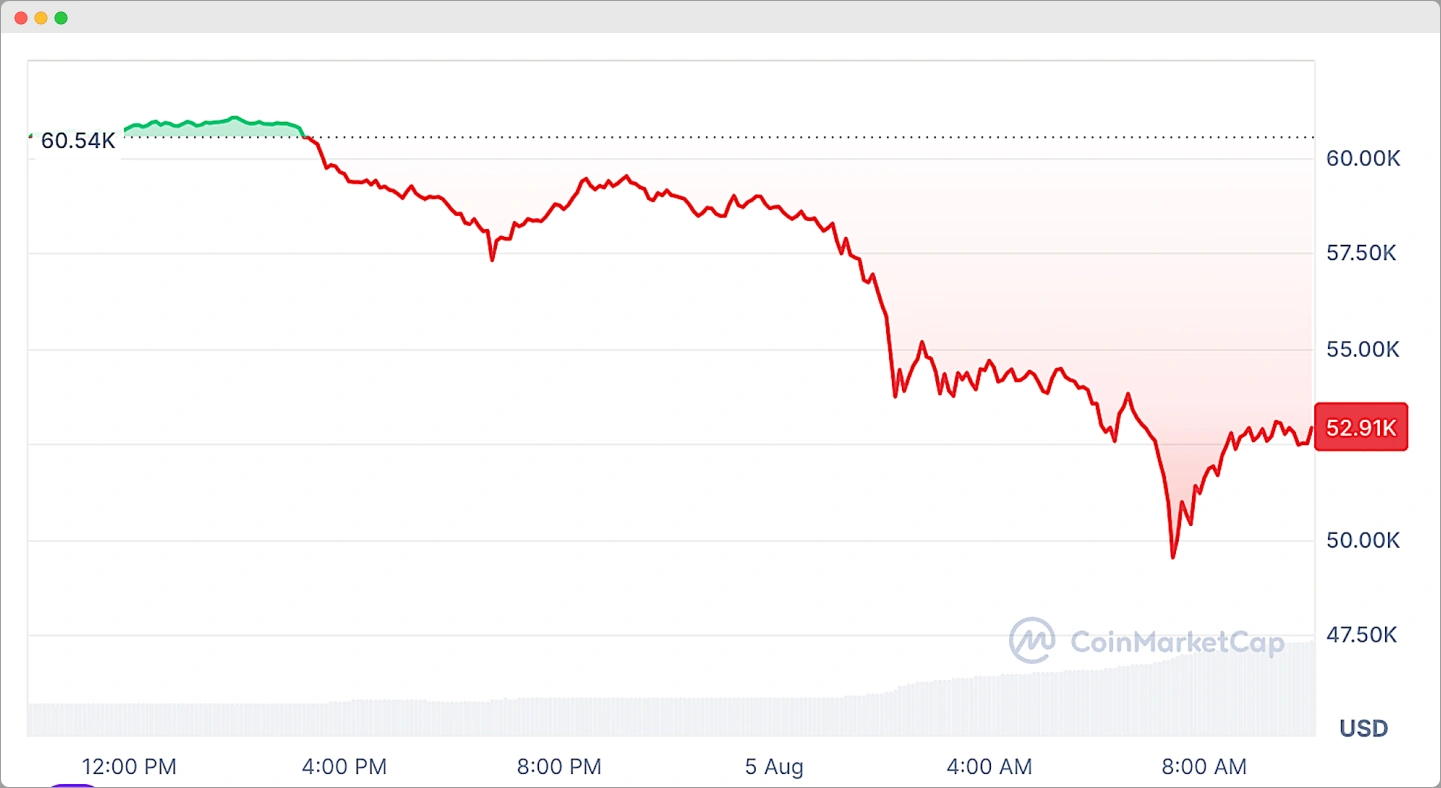What Is Cryptocurrency?
Cryptocurrency is a digital asset that utilizes cryptography for secure and decentralized financial transactions.
It operates on blockchain technology, which serves as a public ledger, ensuring transparency and security.
Each transaction is verified by a network of participants, enhancing trust and reducing fraud risk.
Since the launch of Bitcoin in 2009, various cryptocurrencies have emerged, each with unique functionalities.
While they offer significant advantages like privacy and reduced transaction costs, they also come with risks, including market volatility and security vulnerabilities.
Exploring further will reveal more insights into the workings and implications of this evolving financial landscape.
Principal Conclusions
Hide- Cryptocurrency is a digital asset that uses cryptography to secure financial transactions and control the creation of new units.
- Transactions are recorded on a decentralized public ledger called blockchain, ensuring transparency and reducing fraud.
- Bitcoin, introduced in 2009, was the first cryptocurrency, paving the way for others like Ethereum and Litecoin.
- Cryptographic principles enhance user privacy and security, safeguarding against unauthorized access and fraud.
- The market includes various types of cryptocurrencies, such as stablecoins, which aim to provide stability against traditional currency fluctuations.
Definition of Cryptocurrency

Cryptocurrency, a revolutionary digital asset, is defined as a form of currency that utilizes cryptography for secure financial transactions and controls the creation of new units.
Unlike traditional currencies (e.g. Fiat currency), cryptocurrencies operate on decentralized networks based on blockchain technology, ensuring transparency and reducing the risk of fraud.
Each transaction is recorded on a public ledger, allowing for traceability while maintaining user privacy.
This decentralized nature also diminishes the influence of central banks, making it appealing for those seeking autonomy over their finances.
Moreover, the cryptographic principles underpinning cryptocurrencies enhance their security, safeguarding against unauthorized access.
As digital assets continue to evolve, understanding their fundamental definition is essential for individuals prioritizing safety and security in their financial choices.
Brief History of Cryptocurrency
Since the introduction of Bitcoin in 2009 by an anonymous person or group known as Satoshi Nakamoto, the landscape of digital currency has undergone significant transformation.
Bitcoin’s innovative blockchain technology provided a decentralized framework, allowing peer-to-peer transactions without the need for intermediaries.
Following Bitcoin, numerous alternative cryptocurrencies emerged, such as Litecoin in 2011 and Ethereum in 2015, each introducing unique features and addressing various market needs.
The rise of Initial Coin Offerings (ICOs) in 2017 spurred further investment and innovation, although it also raised concerns regarding security and regulation.
In response, governments and financial institutions began exploring regulatory frameworks to guarantee consumer protection and mitigate risks associated with digital assets.
How Cryptocurrency Works
The operation of cryptocurrency is fundamentally rooted in blockchain technology, which serves as a decentralized ledger that records all transactions across a network of computers.
Each transaction is verified by network participants, known as miners, who use sophisticated algorithms to guarantee accuracy and security.
Once validated, transactions are grouped into blocks and linked to previous blocks, creating a secure chain.
This decentralized nature enhances safety, as the absence of a central authority reduces the risk of fraud and hacking.
Moreover, cryptographic techniques protect user identities and transaction details, guaranteeing privacy.
As a result, cryptocurrency transactions provide a level of security and integrity that traditional financial systems often lack, appealing to those seeking a reliable alternative.
Types of Cryptocurrencies
The landscape of cryptocurrencies is diverse, encompassing major players like Bitcoin and Ethereum, as well as a variety of emerging altcoins.
Understanding the characteristics and trends of these different types is essential for traversing the market effectively.
This discussion will provide an overview of key cryptocurrencies and highlight notable trends within the altcoin sector.
1. Major Phase
Cryptocurrencies represent a diverse and evolving landscape, characterized by various types that serve distinct purposes and functionalities.
Among the most prominent is Bitcoin, the first and most well-known cryptocurrency, often seen as a digital gold.
Ethereum, known for its smart contract capabilities, allows developers to create decentralized applications, enhancing functionality beyond simple transactions.
Ripple focuses on facilitating cross-border payments, aiming to streamline international transactions for banks and financial institutions. Litecoin, created as a “lighter” version of Bitcoin, offers faster transaction times.
Additionally, stablecoins like USDC and Tether provide a less volatile alternative, pegged to traditional currencies.
Understanding these major cryptocurrencies is vital for making informed decisions in this dynamic market, prioritizing safety and security.
2. Emerging Altcoin Trends
As the cryptocurrency market matures, emerging altcoins are gaining attention for their innovative features and unique use cases.
These altcoins are designed to address specific needs within the financial ecosystem, ranging from enhanced privacy to improved scalability.
Investors are increasingly considering these alternatives to traditional cryptocurrencies, seeking diversification and potential growth.
| Altcoin Name | Key Feature | Use Case |
|---|---|---|
| Chainlink | Decentralized Oracles | Smart Contracts |
| Polkadot | Interoperability | Multi-Chain Transactions |
| Tezos | On-chain Governance | Self-Amending Protocols |
| Cardano | Proof-of-Stake | Sustainable Transactions |
Such trends underscore the importance of thorough research and risk assessment, ensuring that investors can make informed decisions in this dynamic landscape.
Advantages of Using Cryptocurrency
While traditional financial systems have their merits, the advantages of using cryptocurrency are increasingly drawing attention from individuals and businesses alike.
One of the key benefits is enhanced security; cryptocurrencies utilize advanced cryptographic techniques to secure transactions, reducing the risk of fraud.
Additionally, the decentralized nature of blockchain technology allows for greater transparency and reduces reliance on intermediary institutions, which can be prone to errors and data breaches.
Moreover, cryptocurrency transactions often incur lower fees compared to traditional banking methods, making them more cost-effective for users.
Finally, the ability to conduct cross-border transactions quickly and efficiently provides a level of convenience that traditional systems struggle to match, appealing to a global audience seeking reliable and secure financial solutions.
Risks and Challenges

Despite the advantages of cryptocurrency, significant risks and challenges must be acknowledged.
Market volatility can lead to unpredictable financial outcomes, while regulatory uncertainty can hinder widespread adoption and create compliance issues.
Additionally, security vulnerabilities pose threats to user assets, highlighting the need for robust protective measures.
1. Market Volatility Concerns
The cryptocurrency market is notoriously characterized by its extreme volatility, posing significant risks and challenges for investors and stakeholders alike.
Rapid price fluctuations can lead to substantial financial losses, compelling investors to exercise caution.
Understanding these risks is vital for informed decision-making in a landscape marked by uncertainty.
| Risk Factor | Impact on Investors | Mitigation Strategies |
|---|---|---|
| Price Fluctuation | High | Diversification |
| Market Sentiment | Medium | Research and analysis |
| Regulatory Changes | Medium | Staying informed |
| Technological Issues | High | Using reputable platforms |
| Psychological Factors | Medium | Setting clear investment goals |
Investors must remain vigilant, developing strategies to manage risks while traversing this unpredictable environment.
2. Regulatory Uncertainty Issues
As the cryptocurrency market continues to evolve, regulatory uncertainty emerges as a significant challenge that can profoundly impact investor confidence and market stability.
The lack of clear and consistent regulations can lead to several risks, including:
- Inconsistent Guidelines: Varying regulations across jurisdictions can create confusion for investors and businesses.
- Potential Legal Repercussions: Investors face risks if they unknowingly violate ambiguous laws.
- Market Manipulation: Unregulated environments may allow for fraudulent activities, undermining genuine investments.
- Inhibited Innovation: Uncertainty can deter companies from developing new technologies or solutions in the cryptocurrency space.
Addressing these regulatory issues is vital for fostering a secure environment that encourages responsible investment and innovation in the cryptocurrency landscape.
3. Security Vulnerabilities Risks
Regulatory uncertainty not only complicates the landscape for investors but also exposes the cryptocurrency market to significant security vulnerabilities.
These risks can undermine user trust and financial stability. Common vulnerabilities include hacking, fraudulent schemes, and inadequate security protocols.
| Vulnerability Type | Description |
|---|---|
| Hacking | Unauthorized access to wallets |
| Phishing | Deceptive attempts to steal data |
| Smart Contract Bugs | Flaws in code leading to exploits |
| Exchange Risks | Centralized platforms may be compromised |
To mitigate these vulnerabilities, users should adopt secure practices, such as using hardware wallets and enabling two-factor authentication.
Awareness and vigilance are essential for ensuring safety in an unpredictable market.
Cryptocurrency and Blockchain Technology

While many associate cryptocurrency solely with digital currencies like Bitcoin, the underlying blockchain technology is equally significant, serving as the backbone that enables secure, transparent transactions.
Blockchain’s decentralized nature helps to mitigate risks associated with traditional financial systems, thereby enhancing safety for users. Key features of blockchain technology include:
- Transparency: All transactions are recorded on a public ledger, accessible to all participants.
- Immutability: Once recorded, transactions cannot be altered or deleted, ensuring data integrity.
- Security: Cryptographic techniques protect transaction data from unauthorized access.
- Decentralization: Eliminates the need for a central authority, reducing points of failure.
These attributes contribute to a more secure environment, fostering trust among users in the cryptocurrency landscape.
Future of Cryptocurrency
The future of cryptocurrency is poised for significant evolution, influenced by ongoing advancements in blockchain technology and shifting market dynamics.
As regulatory frameworks become clearer, investor confidence is likely to improve, fostering wider adoption.
Enhanced security measures will address concerns surrounding fraud and hacking, making cryptocurrencies a safer option for transactions and investments.
Moreover, the integration of cryptocurrencies with traditional financial systems could lead to greater usability and acceptance among mainstream consumers.
Innovations such as stablecoins may provide a bridge between digital assets and fiat currencies, offering stability in volatile markets.
Overall, as the landscape matures, cryptocurrencies are expected to play a pivotal role in the global economy, appealing to those who prioritize security and reliability in their financial dealings.
Wrapping Up
In summary, cryptocurrency represents a revolutionary advancement in the domain of finance, merging technology and economy.
Its decentralized nature, underpinned by blockchain technology, boost transparency, security, accessibility and lower transaction costs
Most Asked Questions (FAQs)
How Do I Buy and Sell Cryptocurrencies?
Traversing the digital marketplace requires astute awareness. To buy and sell cryptocurrencies, utilize reputable exchanges, establish secure wallets, and implement robust security measures, ensuring that your transactions are both safe and efficient in this evolving landscape.
Are Cryptocurrencies Legal in My Country?
The legality of cryptocurrencies varies by country. To guarantee compliance and safety, it is vital to consult local regulations or legal experts, as some jurisdictions may impose restrictions or outright bans on cryptocurrency transactions and usage.
What Is the Role of Cryptocurrency Wallets?
Cryptocurrency wallets serve as secure digital storage solutions, enabling users to manage, send, and receive their assets. They provide essential encryption and private key management, ensuring the safety and integrity of users’ financial transactions.
Can I Use Cryptocurrency for Everyday Purchases?
“Where there’s a will, there’s a way.” Yes, cryptocurrency can be used for everyday purchases, but guarantee you choose reputable vendors and secure wallets to protect your investments and personal information from potential threats.
How Do I Secure My Cryptocurrency Investments?
To secure your cryptocurrency investments, employ strong passwords, enable two-factor authentication, utilize hardware wallets for storage, and regularly update your software. Additionally, remain vigilant against phishing attempts and educate yourself on safe trading practices.

